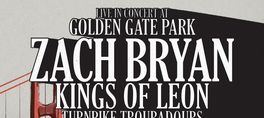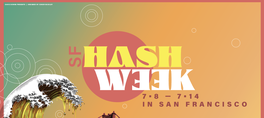In recent years, performance artist and writer Guillermo Gómez-Peña has been grappling with the demons of aging and considers the failing body as a metaphor for his larger quest to find a voice and place in the new century. In this new piece, to be premiered in San Francisco at the new San Francisco Arts Commission Main Gallery, Gómez-Peña will be performing five "spoken choreographies." During the performance, he invites two close collaborators from his troupe La Pocha Nostra to intervene. In one section, prima ballerina Michele Ceballos will teach 60-year-old Gómez-Peña to dance ballet. Other spoken choreographies involve personal confessions from Gómez-Peña regarding his loss of homeland in Mexico to organized crime and the feelings of being an internal exile in his chose city of San Francisco due to virulent gentrification.
Gómez-Peña has spent many years developing his unique solo style, "a combination of embodied poetry, performance activism and theatricalizations of postcolonial theory." In his ten books, as in his live performances, digital art, videos, and photo-performance, he pushes the boundaries still further, exploring what's left for artists to do in a repressive global culture of censorship, paranoid nationalism and what he terms "the mainstream bizarre." Gómez-Peña examines where this leaves the critical practice of artists who aim to make tactical, performative interventions into our notions of culture, race, and sexuality. His self-styled "imaginary activism" invokes performance art as a form of radical democracy and citizenship.
Gómez-Peña's unique format reveals to an audience the process of creating, languaging, and performing material and this process becomes the actual project. It is precisely in his latest work where Gómez-Peña's literature, theory, activism, pedagogy, and live art come together in a wonderfully strange mix.
Besides his international work with the legendary troupe La Pocha Nostra, he has presented his solo work as museums, universities, galleries, and theaters throughout the U.S., Canada, Europe, Latin America, Australia, and South Africa.
show less
Gómez-Peña has spent many years developing his unique solo style, "a combination of embodied poetry, performance activism and theatricalizations of postcolonial theory." In his ten books, as in his live performances, digital art, videos, and photo-performance, he pushes the boundaries still further, exploring what's left for artists to do in a repressive global culture of censorship, paranoid nationalism and what he terms "the mainstream bizarre." Gómez-Peña examines where this leaves the critical practice of artists who aim to make tactical, performative interventions into our notions of culture, race, and sexuality. His self-styled "imaginary activism" invokes performance art as a form of radical democracy and citizenship.
Gómez-Peña's unique format reveals to an audience the process of creating, languaging, and performing material and this process becomes the actual project. It is precisely in his latest work where Gómez-Peña's literature, theory, activism, pedagogy, and live art come together in a wonderfully strange mix.
Besides his international work with the legendary troupe La Pocha Nostra, he has presented his solo work as museums, universities, galleries, and theaters throughout the U.S., Canada, Europe, Latin America, Australia, and South Africa.
In recent years, performance artist and writer Guillermo Gómez-Peña has been grappling with the demons of aging and considers the failing body as a metaphor for his larger quest to find a voice and place in the new century. In this new piece, to be premiered in San Francisco at the new San Francisco Arts Commission Main Gallery, Gómez-Peña will be performing five "spoken choreographies." During the performance, he invites two close collaborators from his troupe La Pocha Nostra to intervene. In one section, prima ballerina Michele Ceballos will teach 60-year-old Gómez-Peña to dance ballet. Other spoken choreographies involve personal confessions from Gómez-Peña regarding his loss of homeland in Mexico to organized crime and the feelings of being an internal exile in his chose city of San Francisco due to virulent gentrification.
Gómez-Peña has spent many years developing his unique solo style, "a combination of embodied poetry, performance activism and theatricalizations of postcolonial theory." In his ten books, as in his live performances, digital art, videos, and photo-performance, he pushes the boundaries still further, exploring what's left for artists to do in a repressive global culture of censorship, paranoid nationalism and what he terms "the mainstream bizarre." Gómez-Peña examines where this leaves the critical practice of artists who aim to make tactical, performative interventions into our notions of culture, race, and sexuality. His self-styled "imaginary activism" invokes performance art as a form of radical democracy and citizenship.
Gómez-Peña's unique format reveals to an audience the process of creating, languaging, and performing material and this process becomes the actual project. It is precisely in his latest work where Gómez-Peña's literature, theory, activism, pedagogy, and live art come together in a wonderfully strange mix.
Besides his international work with the legendary troupe La Pocha Nostra, he has presented his solo work as museums, universities, galleries, and theaters throughout the U.S., Canada, Europe, Latin America, Australia, and South Africa.
read more
Gómez-Peña has spent many years developing his unique solo style, "a combination of embodied poetry, performance activism and theatricalizations of postcolonial theory." In his ten books, as in his live performances, digital art, videos, and photo-performance, he pushes the boundaries still further, exploring what's left for artists to do in a repressive global culture of censorship, paranoid nationalism and what he terms "the mainstream bizarre." Gómez-Peña examines where this leaves the critical practice of artists who aim to make tactical, performative interventions into our notions of culture, race, and sexuality. His self-styled "imaginary activism" invokes performance art as a form of radical democracy and citizenship.
Gómez-Peña's unique format reveals to an audience the process of creating, languaging, and performing material and this process becomes the actual project. It is precisely in his latest work where Gómez-Peña's literature, theory, activism, pedagogy, and live art come together in a wonderfully strange mix.
Besides his international work with the legendary troupe La Pocha Nostra, he has presented his solo work as museums, universities, galleries, and theaters throughout the U.S., Canada, Europe, Latin America, Australia, and South Africa.
show less
Date/Times:
401 Van Ness Avenue, San Francisco, CA 94102
The Best Events
Every Week in Your Inbox
From Our Sponsors
UPCOMING EVENTS
Great suggestion! We'll be in touch.
Event reviewed successfully.









